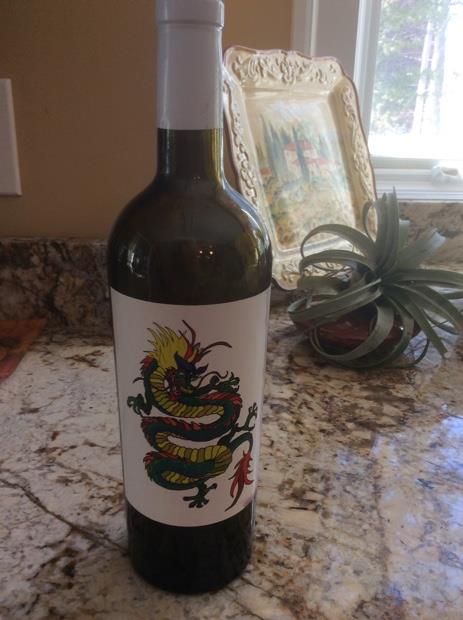| Chappellet Producer websiteMalbec Varietal character (Appellation America)
One of the traditional “Bordeaux varietals”, Malbec has characteristics that fall somewhere between Cabernet Sauvignon and Merlot. A midseason ripener, it can bring very deep color, ample tannin, and a particular plum-like flavor component to add complexity to claret blends. Malbec is a finicky vine whose fruit is prone to rot and mildew in the cool, damp coastal climate of Bordeaux. But ask a Bordelais grower why there’s no Malbec around, and you’ll more likely get a dismissive shrug and sniff than a viticultural analysis. It is known in much of France as Côt, and, in Cahors, also as Auxerrois. There are in fact hundreds of local synonyms, since Malbec at one time was widely planted all over the country. Sensitivity to frost and proclivity to shatter or coulure (a disease that results in premature fruit drop) is the primary reason that Malbec has become a decreasing factor in most of France. Although plantings in the Medoc have decreased by over twothirds since the mid-twentieth century, Malbec is now the dominant red varietal in the Cahors area. The Appellation Controlée regulations for Cahors require a minimum content of 70%. Malbec is also planted in Chile, and there’s relatively little and recent acreage in California and Australia. It is usually blended with other red varietals in these countries. But Malbec truly comes into its own in Argentina, where it is the major red varietal planted. Much of the Malbec vines there were transplanted from Europe prior to the outbreak of phylloxera and most is therefore ungrafted, on its own roots. Sadly, over the years the bug infested Argentina, too, and vineyards are being replanted on resistant rootstock. Happily, the vines thrive in the arid climate of the Mendoza region in the foothills of the Andes. Made in the context of this South American nation’s Spanish and Italian heritage, it produces a delicious wine that has almost nothing in common with Bordeaux except the color. Argentines often spell it “Malbeck” and make wines from it that are slightly similar in flavor to those made in Europe, but with softer, lusher structure, more like New World Merlot. Another difference is that where French examples are usually considered short-lived, Argentine Malbecs seem to age fairly well. Successful Argentine Malbec growers claim that, in order to develop full maturity and distinction, Malbec needs “hang time” even after sugar levels indicate ripeness. Otherwise, immature Malbec can be very “green” tasting, without its characteristic notes of plum and anise. Malbec in Argentina has come to be appreciated for a spicy white pepper characteristic, the aroma of violets, and sweet, jammy fruit. It is a seductive wine that is typically warm and generous in the mouth, with plenty of flesh, and very appealing when young. Almost always producing a ripe and fruity, even plummy wine, Malbec can take oak aging or show well without it; it’s juicy and quaffable when young but can benefit from aging, developing an intriguing complexity with time in the bottle. It can range in price from as little as $7 to more than $75. The true potential of Argentine Malbec, and indeed in the entire spectrum of Argentine wines, is demonstrated by the fact that many of the world’s most renowned winemakers have come to Argentina to make wine. Both the legendary California winemaker Paul Hobbs, and Michel Rolland of Bordeaux, one of the world’s most famous winemakers, have created very high-end Malbecs. It may be the Italian component in the country’s mixed Latin family tree that fosters the fact that Malbec is an exceptional companion with a broad range of food. Its well-balanced fruit-and-acid profile makes it a natural with rare beef (bear in mind that Argentina is cattle country), but it’s just as good with simple fare from burgers to fried chicken. With its natural balance, good pairings include: cajun cuisine, calzones, cannelloni with meat, poultry, vegetable couscous, steak creole, Greek cuisine, deviled eggs, hummus, Indian cuisine, leg of lamb, Mexican cuisine with meat, pâté, spinach soufflé, and hearty pasta. For cheeses, think of harder styles that are either waxed or oiled, such as Parmigiano Reggiano, Ricotta Salata, Romano, Asiago, Pont l’Eveque, Gruyere, Manchego, Cantal, Comte, old Gouda, old Cheddar, Baulderstone, Beaufort, Leicester, aged Chesire, Chevre Noir, Wensleydale, Tilsit, Iberico, Mahon, Roncal, and Mizithra.USAAmerican wine has been produced since the 1500s, with the first widespread production beginning in New Mexico in 1628. Today, wine production is undertaken in all fifty states, with California producing 84% of all U.S. wine. The continent of North America is home to several native species of grape, including Vitis labrusca, Vitis riparia, Vitis rotundifolia, and Vitis vulpina, but the wine-making industry is based almost entirely on the cultivation of the European Vitis vinifera, which was introduced by European settlers. With more than 1,100,000 acres (4,500 km2) under vine, the United States is the fourth-largest wine producing country in the world, after Italy, Spain, and France.California2021 vintage: "Unlike almost all other areas of the state, the Russian River Valley had higher than normal crops in 2021, which has made for a wine of greater generosity and fruit forwardness than some of its stablemates." - Morgan Twain-Peterson Napa Valley Napa Valley Wineries and Wine (Napa Valley Vintners)Napa ValleySt. Helena |
